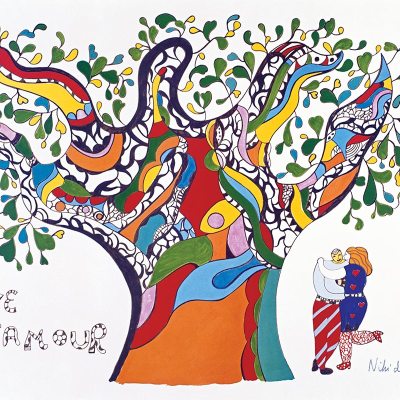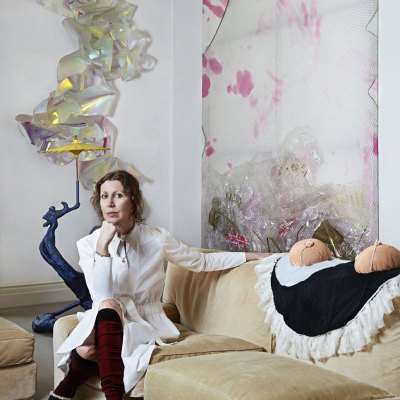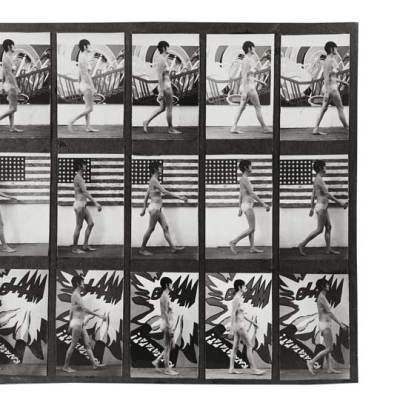For many years, particularly outside of the US, Marisol Escobar’s historical reputation has remained stubbornly and dramatically out of sync with her level of activity and visibility during the 1950s, ’60s and ’70s, when she regularly exhibited in New York, notably at the Sidney Janis Gallery, and counted many Abstract Expressionist and Pop artists among her friends. Like many women artists whose careers took off in the 1960s, before second wave feminism had fully taken hold, to a certain extent she suffered from a rather cruel type of double invisibility, overlooked in relation to her male peers – particularly those associated with Pop art – but also not slotting in easily to the politicised feminist networks of the 1970s.
It is still only relatively recently that Marisol (who was widely known simply by her first name) has begun to receive sustained attention. She was included, for example, in the major exhibition ‘The World Goes Pop’ at Tate Modern last year, and in important shows such as ‘Seductive Subversion: Women Pop Artists, 1958–1968’, organised by Kalliopi Minioudaki and Sid Sachs at the Rosenwald-Wolf Gallery of the University of the Arts, Philadelphia in 2010. Her reputation has been steadily on the rise in the US in particular.
One thing that has posed a challenge to Marisol’s historical reception is her peripatetic existence. Born in Paris to Venezuelan parents, her family moved between Venezuela and the US during her childhood, and the artist would travel frequently throughout her life, dropping out of the New York art world for significant periods. This was particularly the case during the 1970s, when she travelled to Asia, Europe and Latin America.
Marisol’s early training took her to both Los Angeles and New York. Although she began working in an Abstract Expressionist vein, she soon started to incorporate found items and mass culture imagery into her work in a way that chimed with the experiments of Neo-Dada and Pop artists. In 1962, she appeared alongside American Pop artists and European ‘Nouveaux Réalistes’ in Janis’s New Realists exhibition of 1962, which brought together a range of artists who used objects and imagery from everyday life in their work. Marisol went on to show with Janis a number of times during the 1960s, in both group and solo shows, as well as at other venues such as the Stable Gallery.
American artist Marisol Escobar with some of her carved wooden sculptures.
New York 1959 pic.twitter.com/f0GzykKh7S— Women Artists🎨 (@WomenArtists1) April 28, 2016
The eclecticism of the New Realists show was also a feature of Marisol’s work, which perhaps partly explains why, after the 1960s, she seemed to slip between the cracks of both the New York art world and art history, where she has yet to be fully rehabilitated. In her 1966 book on Pop Art, for example, the critic Lucy Lippard famously expressed her doubts about Marisol’s Pop credentials. While this may reflect a rather constrained view of Pop, it is also not too difficult to see where Lippard was coming from. Marisol worked with wood and created large, blocky, carved and painted figures, sometimes standing alone, but frequently in groups – she made several family clusters during the early 1960s. These are idiosyncratic and unique works.
Her menagerie of characters includes celebrities and politicians. A gun-toting John Wayne from 1963 sits astride a wooden horse in full cowboy regalia; elsewhere LBJ (Lyndon B. Johnson; US president from 1963 to 1969) holds a group of other politicians in his hands. But she also made effigies of strangers she seems to have studied as they walked down the street. Marisol’s family groups are among her most light-heartedly observational, although she had a clear eye for gender politics: Women and Dog (1964) features two female figures with multiple, identically made-up faces. For all their brightly coloured clothes, a nod to the post-war US consumer boom, Marisol’s chosen medium means that her figures seem stiff and imprisoned, fixed in their wooden poses like dummies at a fair. At the same time, they have an undeniably statuesque quality, and Marisol credited these effects to a range of influences that included pre-Columbian sculpture.
In his account of the 1962 New Realists show, Janis described how: ‘City bred, the New Realist is a kind of urban folk artist. Living in New York, Paris, London, Rome, Stockholm, he finds his inspiration in urban culture. He is attracted to abundant everyday ideas and facts which he gathers, for example, from the street, the store counter, the amusement arcade or the home.’ Although Janis imagines a ‘he’, this description could equally apply to Marisol, and it also indicates the political valences of her work, which became increasingly concerned with Civil Rights and the challenges of everyday life as things moved into the 1980s. This aspect is just one among many that is still to be fully explored with regard to Marisol’s complex and fascinating practice, and which curators and art historians will hopefully pursue in the future.


